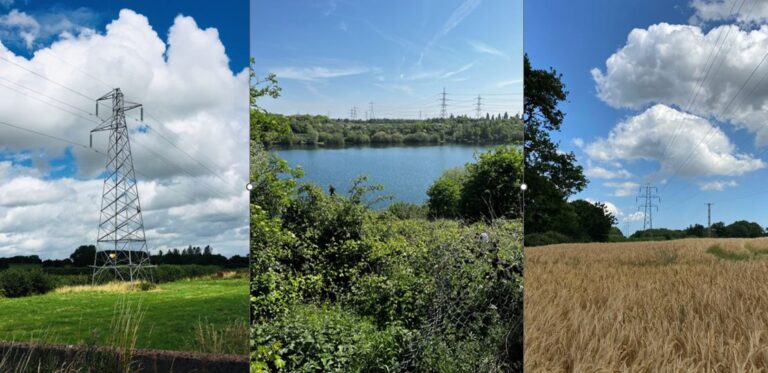
As a landowner or developer, diverting an overhead line underground isn’t always achievable. 132kVs are unlikely to be moved if fewer than three spans are affecting the site, or the cost of doing so may not be justifiable. As for 400kVs and 275kVs, you’ll almost certainly have to live with them.
So how do you make the best of having a major piece of apparatus on your development site? How do you maximise the value of your scheme in spite of it? Compensation may well be claimable from the power company, but as a developer/landowner, you can consider making the best possible use of that space. With some careful planning you may find that you can free up additional land for development. National Grid’s Design Guidelines for Development Near Pylons and High Voltage Overhead Power Lines provides advice on balancing land utilisation with essential operational and safety standards.
Compatible Land Uses
Whilst physical structures and developments are restricted below overhead apparatus, other low-impact land uses are encouraged, particularly when they bring environmental benefits, public amenity and connectivity to a scheme.
National Grid supports land uses that:
- Maintain safety clearances
- Preserve access for maintenance
- Avoid interference with any electrical infrastructure
Examples include:
- Recreation: public parks, sports pitches, and nature trails are all ideal, providing power infrastructure is unobstructed and access routes to it are maintained.
- Agriculture: arable farming, grazing, and seasonal crops are all permitted, but bear in mind that tall machinery or fixed installations are discouraged.
- Environmental enhancement: biodiversity corridors, tree planting*, and flood mitigation measures (SuDS) can all bring enrichment to otherwise sterile land below electricity apparatus. However, features such as attenuation basins and ponds are unwelcome inside the footprint of a pylon tower, due to engineering concerns about stability.
- Transport corridors: cycle paths, walking routes and service roads will all improve connectivity on site, while making practical use of an overhead line’s corridor, but accompanying road lighting and signage will need to respect clearance distances.
- Structural landscaping: this will be permitted providing any alteration to ground levels doesn’t raise the height of planting beyond the safety limits.
- Community uses: community gardens, outdoor fitness zones, and dog walking areas are suitable, but no enclosed or permanent structures should be included.
- Parking and storage: surface level car parks, materials lay down areas, and temporary contractor storage can be accommodated under overhead lines, providing they don’t clash with emergency access points or line safety zones.
*Planting can be an effective way of screening views of electricity apparatus, particularly mature trees, but low height and slow growing species only should be planted below OHLs for safety reasons. Tall trees such as ash, beech, horse chestnut, lime and oak, would need to be kept well away from the apparatus. Hedgerows, community orchards, reed beds, meadows and wild flowers are better choices.
If you have any kind of utility affecting your land, contact BTS to talk through your options.











